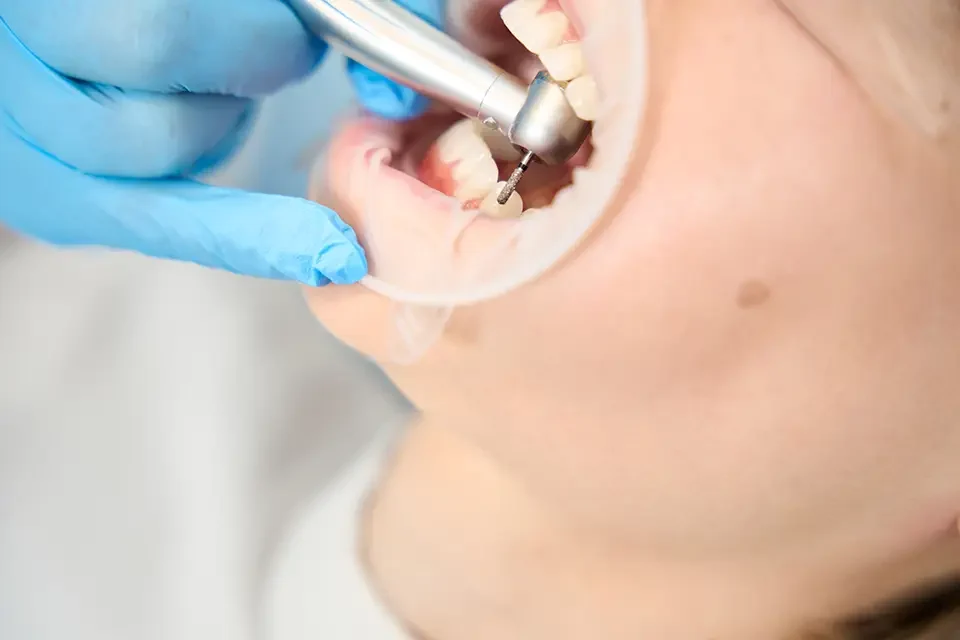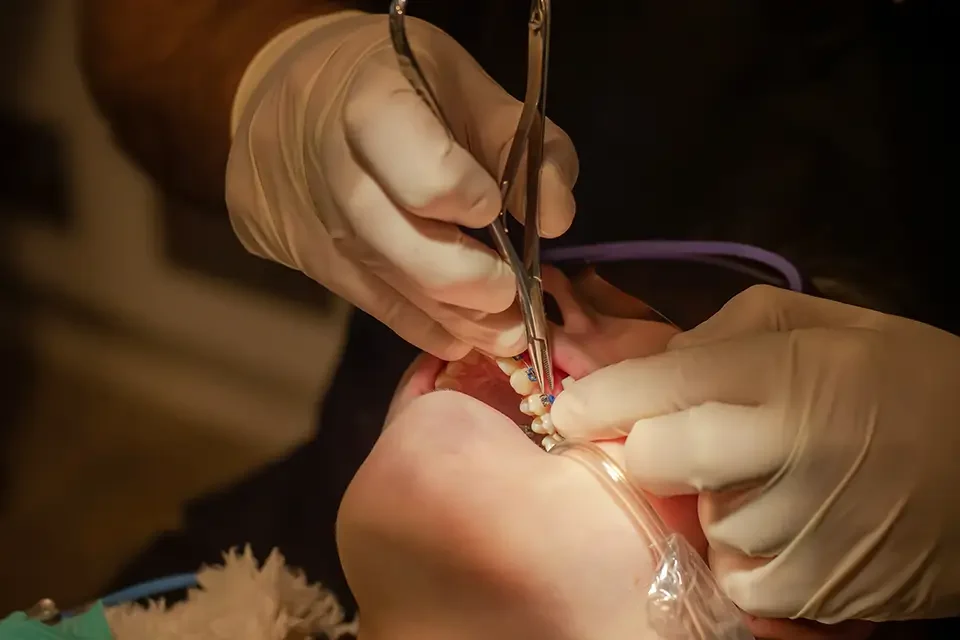A sudden, sharp sensitivity to cold drinks. A persistent, dull ache along the gum line. Perhaps you’ve even observed that a tooth appears longer than its neighbours. These are common yet uncomfortable sensations that often indicate a specific dental issue: an exposed tooth root. This condition is a leading cause of tooth sensitivity, and if you are experiencing it, please know that effective solutions are available.
At Sunshine Dentistry, we assist patients from across Richmond Hill in understanding and managing this condition. Moreover, the good news is that living with this discomfort is not necessary. Understanding the cause of an exposed tooth root and learning about your treatment options are the first steps toward finding lasting relief.
What Is an Exposed Tooth Root? Understanding the Basics
To understand this condition, it is helpful to consider the anatomy of a tooth. The crown, or the visible part of your tooth, is protected by a very hard outer layer of enamel. The root, however, which is normally situated safely beneath the gum line, is covered by a much softer material called cementum. The layer beneath that, known as dentin, is porous and contains microscopic tubules that lead directly to the tooth’s nerve center.
When your gums recede, they pull away from the tooth, leaving this vulnerable root surface unprotected. An exposed tooth root means that this sensitive dentin is now subject to external stimuli. This is the reason you experience a sharp pain when it is touched by cold air, hot liquids, or even the bristles of a toothbrush.

Why Do I Have an Exposed Tooth Root? Common Causes
Gum recession is a gradual process and is typically caused by a few key factors. It is important to note that having an exposed tooth root is not always an indication of poor oral hygiene; in fact, overly aggressive hygiene can be a cause. Common factors include:
- Periodontal Disease: This is the leading cause. A bacterial infection can lead to gum inflammation, causing the tissue to pull away from the teeth.
- Aggressive Brushing Habits: Brushing too forcefully, particularly with a medium or hard-bristled toothbrush, can physically abrade your gum tissue over time.
- Bruxism (Teeth Grinding): The immense force placed on teeth from clenching or grinding can contribute to gum recession.
- Genetic Predisposition: Some individuals are simply genetically inclined to have thinner gum tissue, which makes them more susceptible to recession.
Immediate Relief: How to Manage an Exposed Tooth Root at Home
While professional treatment is required to correct the underlying issue, there are steps you can take immediately to manage the sensitivity from an exposed tooth root. These measures can provide significant relief while you arrange for a professional consultation.
- Switch to a Soft-Bristled Toothbrush: This is an essential first step. A soft brush will clean your teeth effectively without causing further trauma to your gums.
- Use a Desensitizing Toothpaste: Look for toothpastes containing active ingredients like potassium nitrate or stannous fluoride. These work by occluding the microscopic tubules in the dentin, which helps to block pain signals from reaching the nerve.
- Be Mindful of Your Diet: Try to limit your consumption of highly acidic foods and beverages (such as citrus fruits, sodas, and wine), as these can exacerbate sensitivity.
Professional Treatment

At-home care can manage the symptoms, but it cannot restore the protective gum covering. Furthermore, at Sunshine Dentistry, we offer several effective, professional solutions to treat an exposed tooth root definitively.
- Topical Desensitizing Agents: We can apply professional-grade fluoride varnishes or other desensitizing agents directly to the root surface for immediate relief.
- Gum Grafting: This is the most effective method for permanently covering the exposed root. This procedure involves transplanting a small piece of tissue to the receded gum area, which covers the exposed tooth root, protects it, and restores a healthy gum line.
- Dental Bonding: We can also place a layer of tooth-colored composite resin over the sensitive root surface. This creates a protective barrier against external stimuli.
Conclusion: Don't Ignore the Symptoms
An exposed tooth root can be a source of significant daily discomfort, but it is a highly treatable condition. The most important action is to not ignore the symptoms. A professional diagnosis and care are essential for protecting the long-term health of your tooth and finding lasting relief from sensitivity.
At Sunshine Dentistry, our team is here to help our Richmond Hill community find comfortable and effective solutions. We will perform a thorough assessment, explain your options clearly, and create a personalized plan to restore your oral health and comfort.
Ready to put an end to tooth sensitivity? Contact Sunshine Dentistry in Richmond Hill today to schedule your consultation.
Frequently Asked Questions (FAQs)
1. Can an exposed tooth root heal on its own?
Unfortunately, no. Once gum tissue has receded, it does not regenerate on its own. However, professional treatments like gum grafting are very effective at covering the root and restoring the gum line.
2. Will whitening my teeth make the sensitivity worse?
Yes, it is highly probable. Whitening products contain agents that can significantly increase sensitivity, particularly on an exposed tooth root. You should always consult with us before starting any whitening regimen if you have sensitivity.
3. Is the treatment for an exposed tooth root painful?
No. Our patients’ comfort is our highest priority. All professional treatments are performed using effective local anesthesia to ensure you have a completely painless and comfortable experience.



